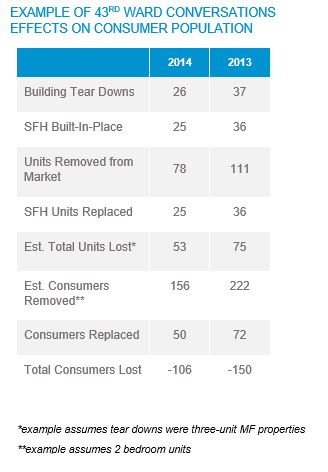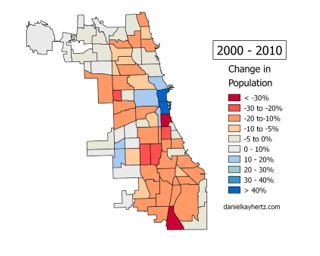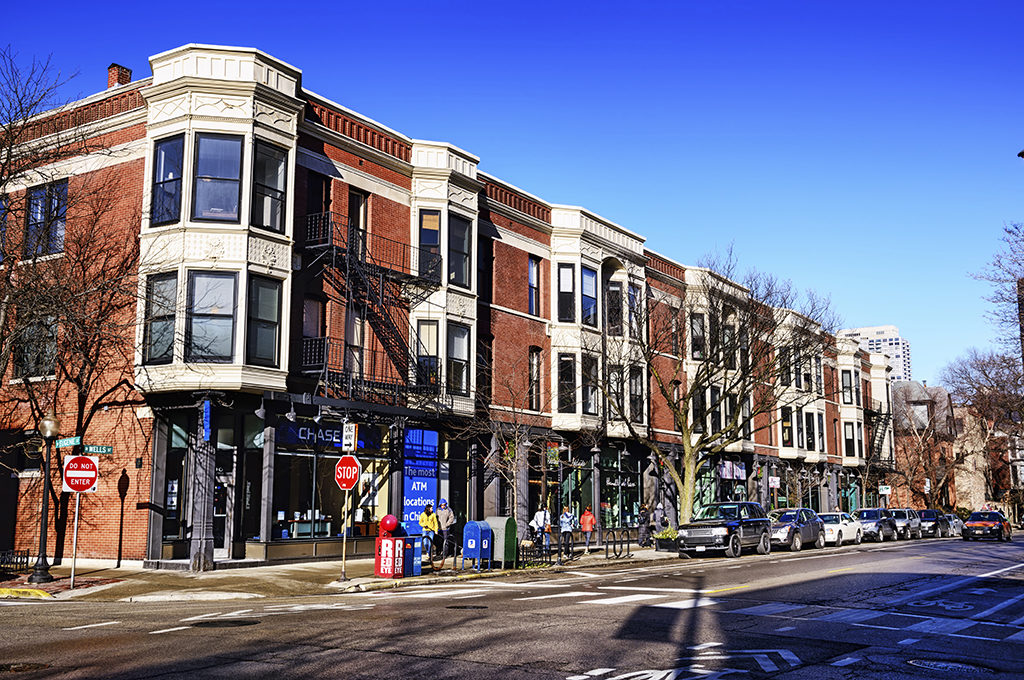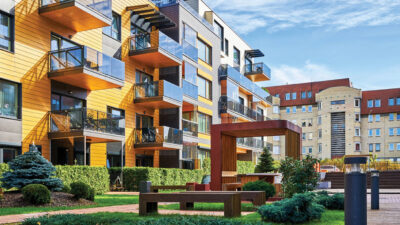Density, Careless Zoning Practices, and the Effects of Population Loss in Chicago
I have lived in Chicago’s historic Lincoln Park neighborhood for nearly a decade. Since my arrival, I have seen a lot of changes, primarily for the worse. At a time when America is becoming increasingly urbanized and housing is in high demand, Chicago residents find themselves in a conundrum; what is the need for density in urban areas and how do we accomplish necessary growth when there is a continued effort to limit density and reduce housing units? Pessimistic attitudes toward urban density and gentrification have increased, leading to protests and obstruction of thoughtful projects by some local residents. This intolerance for growth and change has been taxing for my neighborhood, and yours could be next.
Often, Chicago neighborhoods have a difficult time constructing higher-density, mixed-use development projects due to exhaustive zoning processes and conservative building codes. It doesn’t help that these regulations favor lower density development embraced by aldermen and community activists. This lack of development contributes to population loss and the depletion of retail corridors. One example of this, is on the north side of Chicago at Lincoln and Halsted, two high traffic streets in the Lincoln Park neighborhood which are now turning into relatively abandoned retail districts due to population loss and zoning restrictions.
In a Crain’s Chicago Business article entitled “Who Would Have Guessed That Lincoln Park Was Seeing Population Loss,” author Daniel Hertz explains the changes Lincoln Park has experienced over the past 20 years. In his article, Daniel explains that population loss in many of Chicago’s affluent neighborhoods is directly tied to increasingly strict zoning laws that have outlawed dense development in neighborhoods that should be growing but are not. In fact, many of Chicago’s wealthiest neighborhoods are dramatically below their peak populations and this decline continues despite considerable demand to live in these areas by millennials and baby boomers alike.
The Density Dilemma
In 2004, the Chicago City Council approved a revised zoning ordinance that effectively remapped the city. Additionally, it placed a strong emphasis on the conservation of the city’s many neighborhoods by limiting density and height. This effectively put the practice of constructing tall, thin, high-rise properties in Chicago neighborhoods to an end.
Although I am not completely against this practice, there have been consequences, especially within areas where density is the logical next step. The reduction of density in highly dense neighborhoods has adversely affected consumer spending, local business profitability, city tax revenue, and population growth, especially in Lincoln Park. The recent change to the zoning code to include a Transit-Oriented Development ordinance has helped increase density to a degree, but there are many areas that are still experiencing a lack of growth.
For instance, the apartment boom that has occurred in the Loop and surrounding areas has not yet spread outward to other neighborhoods (excluding Logan Square). In fact, the sprawling lower-density, haphazard development patterns that resulted from the 2004 zoning ordinance have brought us an entirely new issue.
The Urban McMansion Boom
The rise of the urban “McMansion” is a phenomenon that emerged in the early 2000s and has had a catastrophic effect on populations in Lincoln Park and many other north and west side neighborhoods. Developers’ willingness to knock down older multifamily properties, many taking over two to four city parcels, has caused problems for local business owners and residents.
Although it is relatively difficult to quantify, it is logically understandable why taking multi-unit properties and turning them into colossal single family homes could be a bad idea. This trend was examined in a 2015 DNAinfo Chicago article, using data from Chicago Cityscape.
In 2014, the city issued permits to tear down 26 buildings and construct 25 new single-family residences. In 2013, it was 37 and 36 respectively. Essentially, if we assume that each tear down has an average of three units with two people per unit, that would mean that 78 units in 2014 and 111 units in 2013 were removed from the market and replaced with 25 and 36 housing units.
Moreover, 156 consumers in 2014, and 222 in 2013, were potentially displaced from the 43rd ward with only 50 and 72 adult consumers to replace them. This has an exponentially widespread effect and is a key reason as to why many urban retail corridors in Chicago continue to struggle and taxable revenue has been decreasing.

What happens when you multiply this throughout neighborhoods in the city? You guessed it, significant population loss in once thriving neighborhoods and potential abandonment of once prominent retail corridors.

More Density = Greater Affordability
There is a direct relationship between housing supply and affordability. If there is more demand than supply, values and housing costs go up. If there is more supply than demand, values and housing costs go down. Consequently, if you remove housing unit supply from a market and also remove incentives and zoning that promote density, costs to rent or own a housing unit in a given market will rise. As Chicago and many other urban markets find themselves in an exceptional apartment boom, prices continue to rise and apartments have never been less affordable. Why is that? As explained above, and in addition to the condo conversion craze of the 1970s-1990s, Chicago has higher demand for apartments than many think, and that demand has continually exceeded supply in many sought after neighborhood submarkets.
Unfortunately, most new apartment developers target higher income households and due to lack of incentive will not build affordable housing. They instead choose to pay a fee to ‘opt out’ and the concern is real that affordable housing in Chicago is becoming scarce in sought after neighborhoods.
The recently passed Affordable Requirements Ordinance (ARO), is a step in the right direction, but is still a miss because it doesn’t create affordable housing in the neighborhoods that need it most. What the ARO does do, is make new development projects more expensive to build and cuts into developers’ profit margins. Developers should be rewarded for including affordable housing units in their projects. The Fact remains, not all dense housing is affordable, but nearly all affordable housing is dense.
If the City of Chicago were to pioneer higher density forms of housing, as opposed to the current trend of density reduction and urban sprawl, it would surely provide more affordable options in these neighborhoods as well as increasing population density, consumer spending, and best of all, taxable revenue.
Tyler Hague is a LEED AP and Vice President for Colliers’ Multifamily Advisory Group. As a self-professed multifamily ‘guru’, Tyler provides advisory services and thought leadership about multifamily real estate, capital markets, financial investment, urban planning, and development for Colliers Chicago and the Midwest region.

 Tyler Hague
Tyler Hague

 Aaron Jodka
Aaron Jodka
